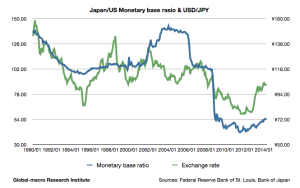According to Reuters (the source in Japanese), BOJ’s Kuroda said the inflation rate would remain fairly strong after the central bank achieves the inflation target of 2%. This statement is significant in the sense that he implied the moderate increasing of the inflation would be acceptable even after it becomes 2%.
As the increasing of the inflation usually follows the financial easing, considering the fact that the BOJ is willing to continue the QE until the inflation rate becomes 2%, the inflation rate is likely to increase after the QE up to around 2.5%. Consequently, the long-term interest rate, which is currently around 0.6%, couldn’t avoid to be hiked after the BOJ finishes the QE. The time to be short the bond futures is approaching.
